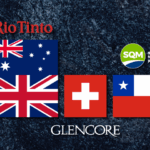Do All Roads Lead to China A-Shares? Evergrande, Regulation, Inclusion, and More!
By Anthony Sassine, CFA

Overview
The A-shares market continues to be under-owned by domestic and foreign investors alike. Domestically, real estate investments constitute most assets1 of a typical household portfolio. Internationally, restrictions on access and lack of inclusion in global indices are prohibiting foreign investors from increasing allocations. Also, the lack of familiarity with the companies operating in the mainland market and questions around optimal allocations played a role in keeping investors away. We believe this is changing fast.
Furthermore, China's supportive policy reforms of industries represented in the A-shares market and the likelihood of easing monetary and fiscal conditions from now on may help accelerate the trend.
Real estate flows redirected
"Housing is for living and not for speculation." President Xi's words continue to permeate global markets. Highly levered developers like Evergrande are now catching up to the new reality. Although the developer's restructuring initially appeared to be a potential systematic risk, it is, in fact, the result of long-term policy decisions. The policies aim to cool down real estate prices and achieve a structural shift in how China's households invest their hard-earned savings.
Both the government and the market expected a slowdown in the property market. On December 31, 20212, the Chinese regulators announced caps on real estate lending by banks. The new directive sent a solid signal to lenders, investors, and developers.
Composition of Household Assets

CN = China, JP = Japan, UK = United Kingdom, TW = Taiwan, US = United States
Source: NFID, CEIC, Wind, Japan Cabinet Office Halifax, Goldman Sachs. Data as of August 2021.
More than 62%1 of total urban households are invested in real estate compared to 23% in the US and 36% in Japan. China's real estate market is valued at $60 trillion1 (from $40 tr1 a couple of years ago), likely the most significant asset class globally, surpassing US equities' $47 trillion1 market value. China's equity market, the second largest in the world, now stands at $13 Trillion1. China can absorb Evergrande immediately, but we believe policymakers do not want to encourage moral hazard. Instead, they seek to send a stern message to investors regarding investing in real estate.
We believe the fallout from Evergrande will ultimately result directly or indirectly in the diversion of real estate assets to the A-shares market.
Total Value of Residential, Fixed Income, and Equity Markets

Source: WFE, CEIC, Japan Cabinet Office Halifax, Goldman Sachs. Data as of August 2021.
MSCI Inclusion Announcement is more likely in 2022
Historically, inclusion announcements by global index companies, especially MSCI, have resulted in troves of global investor flows into the A-Shares markets. Foreign ownership jumped from 2% in 2015 to close to 8%4 today, following MSCI's inclusions in 2016 and 2018. Although institutional investors have been allocating more consistently to the A Shares markets recently, as mentioned in our previous paper, are you being left behind?, a potential inclusion announcement next year could drive more passive and active funds to China still. After all, the market is still at an inclusion factor of only 20%.

Data from Bloomberg as of 10/25/2021. Please see the end of the presentation for definitions. USD in billions.
Recently, the China Securities Regulatory Commission (CSRC) gave the green light to listing A-Shares futures on the Hong Kong exchange, allowing investors to hedge and manage the risk of their A-Share exposure. We believe this represents a significant breakthrough in the quest for full inclusion. Access to derivatives, which enables investors to hedge risk, was a top concern for MSCI to be addressed before further inclusion per MSCI's last China A inclusion consultation3 in February of 2019.
MSCI's other concerns included3:
- A mismatch between the settlement cycles in China (T+1) and the rest of the world (T+2)
- The misalignment of trading holidays in Hong Kong and Mainland China
- The availability of Omnibus trading to facilitate the best execution.
Trading suspensions was another sticking point for MSCI, but China has significantly reduced trading suspensions3. We believe we still need a resolution for concerns 1 and 2, but China is attempting to facilitate the best execution. China has made significant progress in opening up the financial sector over the past few years.
With the top MSCI requirement on its way to be fulfilled, we believe the odds of another partial inclusion in the short term are rising.

Source: MSCI
Liquidity drives China's A-share market
Observers of A-shares understand that Mainland stocks tend to be highly correlated with the amount of liquidity available in the market. Despite witnessing a tightening cycle in 2021 following China's economic recovery from the pandemic, the A-Shares market held up admirably this year despite the ongoing regulatory campaign targeting technology companies. However, the recent weakness in economic indicators reported in July and August of 2021 and the risk of the Delta variant led the People's Bank of China (PBOC), China's central bank, to initiate a 0.5%2 cut in reserve requirement ratios (RRRs) in July. The PBOC also injected $14 billion2 and $19 billion2 to provide much-needed liquidity following the Evergrande debacle.
We expect China to continue easing during the fourth quarter of 2021 and beyond in the form of more RRR cuts and fiscal stimulus. Chinese regional governments still have more than half of their bond issuance quotas for the year unfilled.
Regulations supportive of A-Shares Industries
It is widely known that investing in line with the Chinese government's plans and aspirations can be beneficial in the long term. China's A-shares industries happened to be some of the most aligned Chinese markets, and it is well-positioned to benefit in the long term. Regulations have already been a boon for this market since 2019 (see chart below), as mentioned in our previous report: Policy Reforms Lift A-Shares.
The continued support for healthcare, clean technology, 5g, semiconductors, high-end manufacturing, and, most recently, food and beverage reforms should ensure that the A-shares market is well supported.

All roads lead to A-Shares
The crackdown on real estate and property prices will redirect more flows to the equity markets. We are anxiously awaiting MSCI's consultation announcement, which is usually released towards the end of February of each year, to see whether the approval of A-share futures in Hong Kong will lead to another round of inclusion. Also, we believe the current economic cycle and regulations could provide tailwinds for the A-Shares markets in the short and long term, as many of the government's goals will take decades to achieve.
Citations
1 Goldman Sachs Investment Research. Data as of August 2021
2 Bloomberg
3 MSCI. Data as of February 2019
4 HSBC
Index Definitions:
The MSCI China All Shares Index (referred to as China All-Shares herein) captures large and mid-cap representation across China A‐shares, B‐shares, H‐shares, Red‐chips, P‐ chips, and foreign listings (e.g., ADRs). The index aims to reflect the opportunity set of China share classes listed in Hong Kong, Shanghai, Shenzhen, and outside of China.
MSCI ACWI GDP Weighted (USD Gross) Index: The MSCI ACWI GDP Weighted Index is based on the flagship MSCI ACWI Index, its parent index, and includes large and mid-cap stocks across 23 Developed Markets (DM) and 27 Emerging Markets (EM) countries*. The index uses a different weighting scheme than its cap weighted parent index, however. The weight of each country in the index is derived from its economic size (using GDP data) rather than the size of its equity market. The index was launched on December 6, 2005.
MSCI ACWI Index: The MSCI ACWI captures large and mid-cap representation across 23 Developed Markets (DM) and 27 Emerging Markets (EM) countries*. With 2,979 constituents, the index covers approximately 85% of the global investable equity opportunity set. The index was launched on January 1, 2001.
The MSCI Emerging Markets Index Net Return (referred to as MSCI EM index herein) defined as MSCI EM NR USD captures large and mid-cap representation across 23 Emerging Markets (EM) countries.
China's Equity (Stock) Market: For the purposes of this presentation, this refers to the superset of investments including the Mainland, Hong Kong, and overseas listed securities found in the MSCI China All Shares Index. Note that others may use a different definition and, as such, the data provided by other sources may not match ours as it may exclude shares listed in certain places.
MSCI China A Index (referred to as China A herein): Inception Date: November 25, 2008. The MSCI China A Index captures large and mid-cap representation across China securities listed on the Shanghai and Shenzhen exchanges. The index covers only those securities that are accessible through "Stock Connect". The index is designed for international investors and is calculated using China A Stock Connect listings based on the offshore RMB exchange rate (CNH).
Purchasing Managers Index (PMI): The PMI is an index of the prevailing direction of economic trends in the manufacturing and service sectors.
Consumer Price Index (CPI): it is a measure of the average change over time in the prices paid by urban consumers for a market basket of consumer goods and services.
Producer Price Index (PPI): a group of indexes calculates and represents the average movement in selling prices from domestic production over time.
r-ks-sei










